Road pricing keeps popping up in public discourse, but there seems to be very little detail on the options and how they would work. This week is very much a thought piece, rather than an explainer as I don't have a grasp of the concepts yet.
One of the key current issues is people are realising that with the electrification of the motor vehicle fleet, revenues from fuel duty are falling, notwithstanding the 12 years of fuel duty freeze which has subsidised driving, as well as the zero rating of car tax for electric vehicles creating a loss of income.
Even with the cost of electricity rising, electric vehicles (EVs) are cheaper to run that petrol or diesel vehicles, assuming people can charge them domestically, although again this may actual be skewed by government subsidy. There is also an argument about what are the things we should be powering with electricity and maybe heating our homes and running public transport should be the policy priority.
The Labour government started to look at road pricing, but canned the idea in 2007 when they were behind in the polls. This is a key issue because like it or not, lots of people drive (through choice or necessity) and there is now such a culture of driving being linked freedom, telling people that they are going to have this curtailed isn't exactly going to enjoy widespread support.
Road pricing is touted as the replacement for current motoring taxes where, in theory, people can be charged per mile, an access charge and/ or a surge charge. The idea of an access charge is that you pay a fee (maybe daily) for using the vehicle on the basis that this might put people off from making short trips, although if you've paid your charge for the day, you may as well use your car. A surge price would essentially be higher costs for driving on popular routes at peak demand times in an attempt to get people to change their route or time of travelling.
We actually have examples of the second two mechanisms now. The London Congestion Charge isn't quite a charge for starting the vehicle each day, but once you pay to enter the charging area, you can go in and out of it as much as you like. Of course, it would make sense to try and plan lots of your travel in that day to maximise the benefit rather than driving in each day. Crude surge pricing also operates with the charge not being applied between 10pm and 7am.
There are other schemes such as the Dartford Crossing which isn't a toll in legislative terms, it is a "charging scheme", the Durham Peninsula Charging Zone (which predates London's scheme), the M6 Toll - a privately financed motorway and the Birmingham Clean Air Zone which is about charging drivers of the dirtiest vehicles to access the city centre (and thus push people to reduce their trips or switch to cleaner vehicles.
The Clifton Suspension Bridge - tolls apply!
Anyone who has driven on the European mainland will also be familiar with toll roads in France, tolls for HGVs in Germany and the motorway vignette in Austria (essentially an actual road tax - don't write in). In Singapore, there is electronic road pricing which is essentially a congestion charge for the central area and motorways. Many of these schemes have evolved over the years from paying with cash at toll booths, to having devices in vehicles for detection and payment systems and then to the use of automatic number plate recognition (APNR) to enable free flow collection and charging.
Back in the UK, all of these schemes and charging regimes are separate and locally administered to deal with local issues. Perhaps the Holy Grail is a national charging scheme (although the devolved administrations may wish to do something different). At the simplest level, a Singaporean system is relatively simple to roll out with ANPR cameras on gantries rolled out across the motorway and trunk road network. If integrated with local schemes, then from the driver's perspective, they will be charged for what they use or access in one go.
Such a system could surge price congested areas or times, although there would be demand from users for advance information both before they travel or on the network so they may change their time or routes. For me, this is the start of the difficulties. If you drove between the same towns every day at the same time, you'll want some certainty that the price is the same. If there was something going on which triggered some congestion and the price went up when a journey is already committed, then I can see people getting upset, especially if this price reliability collapsed.
Imagine a future scenario where prices changed in real time - it really would become an acceptability issue. For sure, some people would give up making those trips by car which could be a good policy outcome. However, as is the case now, in the absence of building alternatives people will either be stuck with paying more or having to give up that trip. If this is for work purposes, that could be challenging for some people.
Could we offer cheaper charges when motorways are quiet?
Then we get into the local road network. Of course, congestion comes from the demand of people starting or ending their journey on the local network, but there's also people driving short trips. It is technically feasible to have CCTV on every street, but it's unlikely to be publicly acceptable or financially viable to build such a network which means we need another way of tracking people's driving which probably means on-board kit using GPS and telecoms networks (also known as "telematics").
Again, we run into the issue of public acceptability about being monitored, but the technology is already in use where fleet managers can monitor the location of their vehicles as well as how well they are being driven. The insurance industry uses telematics to monitor the behaviour of younger drivers who want cheaper insurance or people who drive fewer miles wanting a discount - also known as "pay as you drive". So, across the board, we can capture different types of journey.
Back to the short driven trips. I have a neighbour who drives their grandchildren 450 metres to school. They rarely go on elsewhere and usually come home afterwards. They may have personal circumstances that makes this an entirely appropriate mode for them, please understand I am talking in the round here. How do we use road pricing to discourage trips like this?
We could have an access charge. Every time someone starts their car and moves off, they are charged. Maybe it's a daily charge, but it would need to be set at a level to get people to think again - perhaps it applies during the day to make proper off-peak driving cheaper. A high access charge with a relatively low mileage charge means people who need to drive a distance appropriate by car don't lose out on balance, but those driving short distances really are hit. We could even add high prices to drive through side streets as a way of nudging people back onto main roads - reversing the impact of congestion apps which use side streets for capacity.
Of course, a high access charge, coupled with surge charging on a longer journey creates the same issues of public acceptability I set out above. Perhaps we can be cleverer. My local shops are 1,200 metres away and are on a bus route. Perhaps an access charge set at twice the return bus fare would be a good way of managing local demand with some of the revenue going into increasing bus frequency? If a trip between towns competes with a rail route, then could we ensure that the rail fares are always cheaper than the driving charges?
Then we have the fairness question. Lots of our transport networks have been developed for radial commuting which makes orbital journeys difficult for people without cars. There's an orbital trip I occasionally take in my part of London suburbia. It's just under 9 miles, which is an hour and a quarter by public transport (using radial services and interchange), a bit quicker by cycle (depending on my speed, but at least it's orbital). By car, it does vary depending on the time and day which can be between 20 minutes and 45 minutes, but it's orbital. This is in a part of the world which has good public transport, but even with variations of driven journey times, people see driving as more reliable.
In a charging regime, without good public transport, we run the risk of pricing people out of cars who cannot easily travel at different times because they are on a fixed timetable for work or chained trips which might include caring duties. For these people, they are potentially going to end up either having to pay a higher proportion of their income on travel or give up the trips which could be be a serious issue for them or someone they care for. There will also be people who need a car as it best supports their specific needs and so any system will need to take this into account.
The Green Party has been the most consistent politically talking about road pricing and the need for fairness. The headline under their policy TR068 states;
The Green Party supports the principle of road charging for motorised vehicles, as this can be used to specifically reduce traffic in areas where it is most harmful. However, road charging would not be introduced where it would cause a significant increase in the use of other roads, especially those passing through built up areas.
I pick on the Greens, simply because they are the ones who have been talking about the subject for a long time, although I have been struggling to find out any details of how they think it might work (although policy is never about the actual mechanics). London Assembly Member Zack Polanski did recently refer to a Centre for London proposal for road user charging in London which helpfully develops the policy position into something practical including a single system for charging in the Capital, with per-mile charging, higher charges in congested/ polluted areas, variations by vehicle class and higher charges where there is good public transport. Interestingly, the system would be vested with the individual rather than the vehicle which would allow charging to be integrated with public transport so people could make the most appropriate choices.
Can we charge our way out of congestion?
Fairness comes into play for rural communities where there is little or no public transport (and this can also apply to some suburbs of towns and cities). Some have said that maybe those wishing to benefit from being connected should be moving into urban areas and that some who move to rural areas shouldn't expect to be subsidised for their decision. Those arguments may be appropriate in limited circumstances, but it's surely potentially unfair on people who live and work in rural places - this needs to be thought about carefully.
There are other issues to be thought through. The general approach of charging is to replace the current motoring taxes which are becoming obsolete because of technological changes. Notwithstanding the fact that driving simply doesn't cover its externalities, the taxes in general go into the Treasury and are not hypothecated. There was a plan for some VED in England to be spent on building more roads, but that seems to have been dropped for now.
Roads are paid from general taxation at the national level and partly by council tax at the local level. They are treated as a "free at the point of use" public service and even people who don't own cars benefit from them in terms of deliveries, having footways, cycle tracks, buses running on them etc. There are big debates around this too, but private cars are still objectively subsidised.
A road far wider than it needs to be, a significant driving subsidy.
As the proportion of non-EV vehicles in the fleet reduces, people who own them will be the only ones left paying, so either the diminishing revenue is collected by adding tax to electricity; we have road pricing; or we don't charge at all. We can increase the cost of non-domestic charging of course, but we can't split vehicle charging electricity use on a domestic level. Not charging means more subsidy for driving and so we are perhaps logically left with road pricing.
The thing that concerns me a great deal about road pricing however, is that we end up in a position where driving becomes an option for the rich (as early motoring was) which might explain a little of the worry of some of the Left in terms as seeing driving as a mode of transport for the working classes (a term I really dislike, but that's another post); whereas some on the Right see driving as aspirational and individualistic (back to freedom again). If driving ends up for the rich, it doesn't necessarily follow that taxes levied against them will cover the costs of maintaining the road network in any case and I wonder what the end game looks like?
Should we prioritise SUVs or walking and cycling?
As regular readers know, I am a fan of throwing concrete and asphalt around. While road pricing might in the medium term halt the decline of tax revenues, it is never likely to be recast to cover motoring's externalities and so I think we need to be invest in the alternatives such as bus, rail, walking and cycling. We should be building the alternatives now and making them cheaper, easier and more attractive than driving. We should also be thinking about spatial planning and how we arrange employment, education and other facilities so people don't have to travel, unless it's largely based on walking, wheeling and cycling.
If we have higher charges on side roads to keep traffic out, then those who can afford to will pay and it doesn't deal with rat-running and road danger, so we still need to be rolling out low traffic neighbourhoods which actual modal filters that actively give space back to people in the street, rather than the worrying increase in the use of ANPR and exemptions.
An LTN with physical measures.
We also have the serious and pressing issue of maintenance. As a Londoner, I am following the news of Transport for London's financial situation with both fascination and horror. Horror because the organisation has been hammered by Covid creating a huge loss in revenue, but fascination as we have a potentially accelerated the timeline for the managed decline of road assets.
Back when a certain Mr Johnson was Mayor, he cheered on the Government's removal of general grants with the idea that TfL could be self-funding. Public transport is a public service and trying to make it profitable means you end up concentrating on what makes money. Loss-making services are cut, but that means bus services which perform a mainly social service being axed or rail frequency being reduced to fill up the trains a bit more. The problem is, we need to operate transport as a whole to benefit society and unless it is genuinely fast and frequent, it won't compete with driving and we end up with a spiral of decline.
TfL has threatened the closure of key bridges and tunnels because they are old and they cannot afford the repairs if the Government doesn't support the organisation. From a roads point of view, this is actually a potential future scenario. If road pricing simply end up as a way to replace existing tax revenue, it will maintain a subsidised status quo and at least with road building plans in England, we carry on building stuff to maintain.
If it increases to cover externalities, then maybe this pushes enough people off the roads to the point where those left driving keep on having to pay more and does this get us to a point where we have too much capacity in the system and do we start removing roads and when we replace key structures, can they go back narrower?
Imagine a very low car future where we generally travel less and when we do it's foot and cycle locally, buses for a bit further and rail for the longest distances - the financial and taxation model is going to have to be radically different. Maybe we could free up a lot of urban land for redevelopment, but what do we do with the motorways and trunk roads that are no longer needed - maybe light rail or intercity bus services?
Could empty trunk roads become rail corridors?
This is going to be interesting to watch. We have to a greater extent put our transport (and planning) eggs in the motor vehicle basket and we don't really have a plan to wean ourselves off it. Something is going to go bang at some point and I think that even if road pricing becomes a popular policy choice, surely it is only a stop gap?


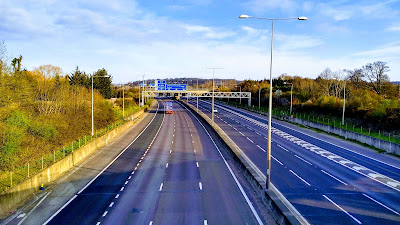
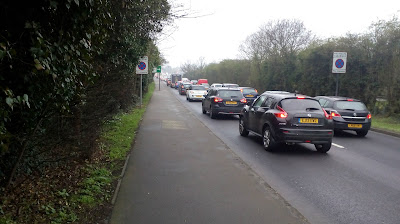

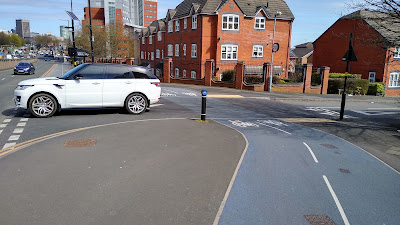
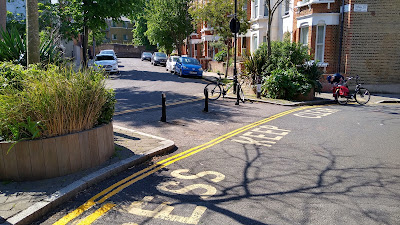
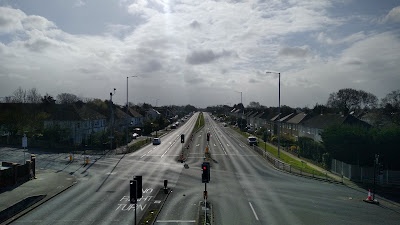
Politics is the real hard bit - so the more simple and easily explainable the better. Give taxi drivers an exemption to get more support. Perfect is the enemy of good!
ReplyDeleteI like road pricing, as it also combats the sunken cost of road tax - how to get people out their cars if they already paid their "annual subscriptions"
Interesting piece, as is this report, https://institute.global/policy/avoiding-gridlock-britain. In London, at least, we need to reduce short journeys of 2 miles or less. This could be achieved by an access chelate in the form of charging a higher amount for the first mile, less for the second mile and very little for additional miles.
ReplyDeleteGreat piece. Have often wondered if it would be possible at least for local government to offer road pricing as an opt-in. For instance, you can choose to continue to pay your local tax as a sort of 'flat rate' or you can choose to switch to a system that takes the transport portion out of your local tax (let's say that's 1/4 of your tax that would be going to roads operating, maintenance, capital, road policing, etc) and let you instead pay for your local government transport use by the mile of travel or minute of parking or what have you as a variable rate.
ReplyDeleteWhile many folks would undoubtedly want to stay with the flat rate and continue paying the local tax, others would perhaps choose the variable rate, as it would be a great money saving incentive for those who make fewer shorter vehicle trips (or none at all, just leave the GPS box in your cupboard!), finally linking the broader benefit of people driving less with an individual benefit (smaller monthly bill).
Allowing road pricing as an option, rather than trying to implement it as a universal system, might be a good way to deal with many of the objections. Don't like it for whatever reason (cost, privacy, etc)? Then carry on as you are. Perhaps at some point the tax rate flat option might have to increase as/when enough low-mileage users choose the variable rate as funding erodes, but that's a longer-term consideration and perhaps not really a problem? Equally the investment in the equipment and system to implement this might be challenging if at first the number of households choosing a variable rate may be limited, though this seems like the sort of dynamic where an initial subsidized investment might be worthwhile.
While this sounds radical, in many places this is how utility billing works (for instance for gas or electric, at least in most of Canada) and it's much easier to frame as an option and choice than a whole new system being imposed. Variable rate billing has proven to be a major efficiency incentive for water and electric utilities, so why not offer it as a choice.
I think there needs to be clarity as to the primary aim of road pricing, i.e.
ReplyDelete1. To reduce the harms of car use
2. To support sustainable future investment in roads
3. To collect as much money as possible
The overall aim will determine the principles for designing the system.
The automotive industry is pushing models of road pricing aimed at the second aim, but some of the proposals include abolition of vehicle excuse duty and an allowance of 'free' road miles to encourage people to own cars even if they use them infrequently. They also call for a single, simple, convenient system, so that people are not discouraged from driving.
In contrast, a system aimed at reducing harm (with revenue as a side-effect) will require multiple components to influence multiple car-related decisions. It will also require charges to vary by income (e.g. discounts for people on low incomes), so that they influence a wider range of people. Measures might include:
- VED based on size and danger of car
- Daily driving charge (to encourage other options for short or occasional journeys)
- Cordon based fees for specific zones
- Distance based fees with a vehicle tracker for commercial/logistic vehicles
- Minimum parking fees (so that discretionary leisure journeys incur a cost)
- Workplace parking levy (so that employers offer sustainable travel incentives instead of free parking)
OReGO is probably the easiest model to implement allowing ramping of fuel duty with a fuel duty rebate scheme. EVs would need a separate billing system. https://www.myorego.org/
ReplyDelete